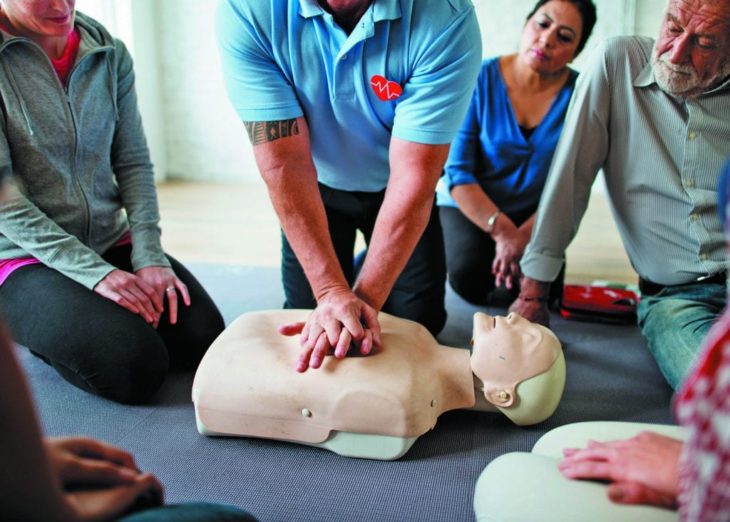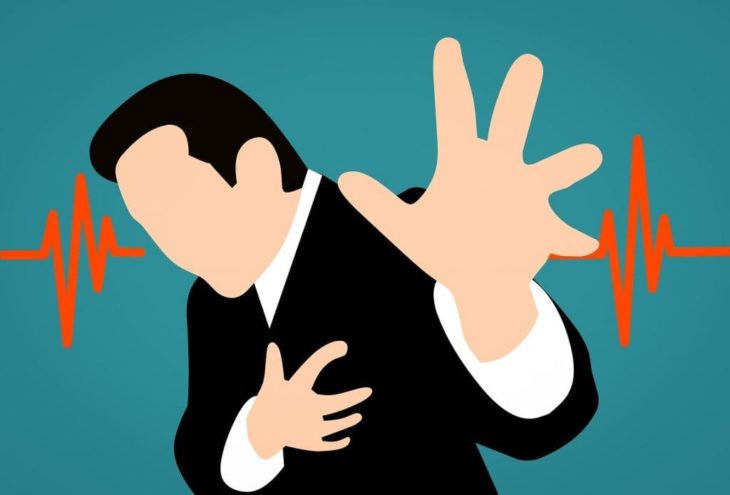What is the first thing you will do when a loved one collapsed suddenly in your presence? The answer: you need to perform CPR. Sudden Cardiac Arrest (SCA) is the leading cause of death for adults over the age of 40. Avive Solutions is developing a next generation Automated External Defibrillator (AED) built with you in mind. It’s usable by anyone, anywhere, anytime. You can take a look.
Since heart diseases are one of the leading causes of death at the moment, it is important for you to learn CPR. Here are eight reasons why you need to learn CPR:
Photo by COMSEVENTHFLT, CC BY-SA 2.0Contents
- 1. CPR Classes Are Interactive and Hands-On
- 2. It Improves Your Self-Confidence
- 3. CPR Gives A Cardiac Arrest Victim A Better Chance of Full Recovery
- 4. You Can Save The Life of a Loved One
- 5. CPR Training Is Not Restricted to A Group of People
- 6. CPR Can Help Save Lives
- 7. More People Need to Learn CPR
- 8. Mouth-To-Mouth Resuscitation Is Not Compulsory
- Conclusion
1. CPR Classes Are Interactive and Hands-On
Los Angeles CPR Classes are usually fun because you will learn the proper way to carry out chest compressions in a positive environment. Also, some of the classes take place online.
2. It Improves Your Self-Confidence
By attending CPR classes, you’re not only equipped with the right tools, but you also develop the confidence you need to become a life saver rather than a bystander. Also, when there is a cardiac emergency, you can make the right decisions because you already have a CPR certification.

Source: Harvard Health – Harvard University
3. CPR Gives A Cardiac Arrest Victim A Better Chance of Full Recovery
After the heart stops pumping, brain death usually occurs at least four minutes later. When you perform CPR on any victim, you will be supplying blood to all vital organs (such as the brain) of the victim’s body and keeps the blood flowing. According to a study by everyday health, the chances of survival is doubled by giving CPR within the first two minutes of cardiac arrest.
4. You Can Save The Life of a Loved One
It is a well-known fact that 80% of cardiac arrests occur at home. Also, most victims of sudden cardiac arrest do not have prior heart diseases or health risk factors and may even appear to be healthy. Hence, you may be saving the life of a loved one when you learn CPR and perform it on them promptly.
5. CPR Training Is Not Restricted to A Group of People
Since anyone can learn CPR, then you should. According to the American heart association, most Americans are unable to perform CPR when there is a cardiac arrest victim either because it’s been a long time they practiced, or they don’t have the proper training required to perform CPR.

Source: Holistic Massage Therapies
6. CPR Can Help Save Lives
CPR can save lives — as there has been a rise in the cases of heart disease especially those that occurred outside hospitals. While 88% of these cases result in death, CPR can improve the victims’ rate of survival when it is performed properly and promptly.
7. More People Need to Learn CPR
It is a proven fact that approximately 30% of cardiac arrest victims receive CPR from bystanders. That’s more than 70% of victims who are left without being given any medical attention. Lack of training is one of the reasons why most people couldn’t administer CPR to those victims.
However, once you have learned the right CPR techniques, you can easily administer CPR on cardiac arrest victims.
8. Mouth-To-Mouth Resuscitation Is Not Compulsory
The guidelines to perform CPR were modified in 2010 and now allows you to perform hands-only CPR when you feel uncomfortable performing mouth-to-mouth resuscitation, or you don’t have formal training in mouth-to-mouth resuscitation.
For most adults who suffer from sudden cardiac arrest, hands-only CPR for them has proven to be as effective as mouth-to-mouth resuscitation.

Source: medium.com
Conclusion
Now you know why you need to learn CPR. However, before I leave you to start learning it, let me share one more important tip: It is easy to perform hands-only CPR, press your hands’ heels on the center of the victim’s chest. Place one of your hands on the other hand and press down on the chest for approximately two inches, release and repeat the process 100 times within two minutes.
Keep repeating the process until medical help is available. Need to see the proper way of performing CPR? Check out online videos and more importantly, attend formal classes. Thus, you can find the most effective learning technique you can use to save a life when the need arises.
